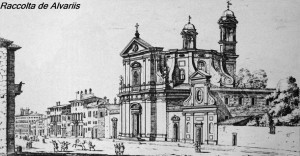 In the heart of ancient Rome, near the Mausoleum of Augustus and the Ara Pacis. The Order of the Ministers of the Infirm arose just here. Among the oldest hospitals arisen in the Middle Ages in Rome, it is also called St. James “in Augusta” (the region was named this way for the presence of the mausoleum of Emperor Augustus). It was built for care of the executors of the deceased Cardinal Pietro Colonna’s last will in 1326.
In the heart of ancient Rome, near the Mausoleum of Augustus and the Ara Pacis. The Order of the Ministers of the Infirm arose just here. Among the oldest hospitals arisen in the Middle Ages in Rome, it is also called St. James “in Augusta” (the region was named this way for the presence of the mausoleum of Emperor Augustus). It was built for care of the executors of the deceased Cardinal Pietro Colonna’s last will in 1326.
The presence of St. Camillus
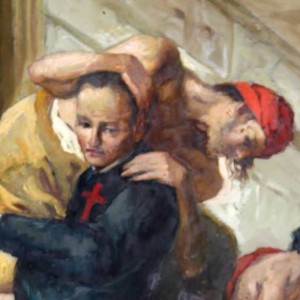


What remains
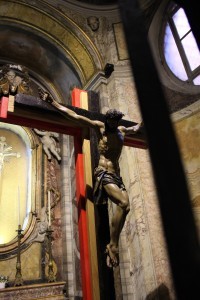


To see
Hospital Building: very little survives of the early fourteenth-century construction of the St. James. It all boils down to a portal of beautiful workmanship, very similar to what’s at St. John’s Hospital, both portals executed in 1350, and, as it seems, thanks to the Colonna Cardinals. The portal of St. James is simpler than the Lateran, severe, with the noble shield of the Colonna (the column), a crown that looks marchesal, abreast a mitre from which the sacred wimples hang. There is not the Cardinal’s hat, perhaps because the arch was built by his nephew James, Bishop of Lombez, son of Stephen Colonna, which housed Petrarch in his palace. Since 1955 the Camillians are back in this Hospital taking the Pastoral Service. In the four hundredth anniversary of the Conversion of St. Camillus (1575-1975) they were able to embed a plaque in memory of the presence of the Holy Founder within these walls.
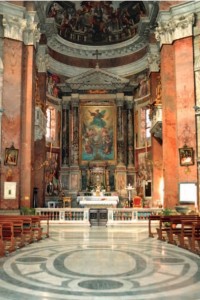


St. Mary Portae Paradisi: little church embedded in the isolate of the St. James Hospital, from which it is accessible. Already known in the eleventh century with the name of St. Mary in Augusta, it had the title “in Porta Paradisi” or just “Portae Paradisi” because near there it opened one of the doors of the walls that surrounded the nearby Mausoleum of Augustus, called paradiseiois, or because there was the cemetery next to the St. James Hospital. Certainly, the Saint went to the church to pray, because of his devotion to the Immaculate Mother of God
Nearby
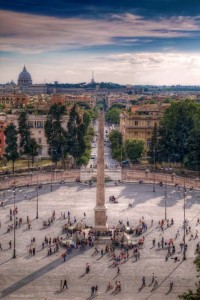


Piazza del Popolo: è una delle più celebri piazze di Roma, ai piedi del Pincio. La forma della piazza assume la conformazione attuale solo alla fine del XIX sec. Precedentemente era una modesta piazza di forma trapezoidale, che si allargava verso il Tridente. Al tempo dell’occupazione napoleonica, infatti, l’aspetto architettonico ed urbanistico della piazza venne rivisto dall’architetto neoclassico Giuseppe Valadier. Si trovano qui la chiesa di Santa Maria del Popolo e le due chiese gemelle Santa Maria in Montesanto (1675) e Santa Maria dei Miracoli (1678). Da ammirare, inoltre, la Porta del Popolo e le fontane, fra cui quella centrale sormontata da un enorme obelisco.
Dall’Ospedale San Giacomo si prosegue verso Piazza del Porto di Ripetta: si raggiunge facilmente a piedi, tornando indietro su via di Ripetta all’altezza di Ponte Cavour (450 m).



From Tiburtina station take metro B in the direction of Laurentina, get off at Termini and take metro A, get off at Flaminio (Piazza del Popolo) and continue on foot.
Metro A Flaminio (Piazza del Popolo) and continue on foot (c. 250m): continue along Via del Corso until the crossroads with Via Antonio Canova. The hospital is at n. 29. From the metro stations S. Giovanni and Spagna (metro A) and Colosseo (metro B) continue with bus number 119. From Piazza Venice and Torre Argentina bus number 119.





